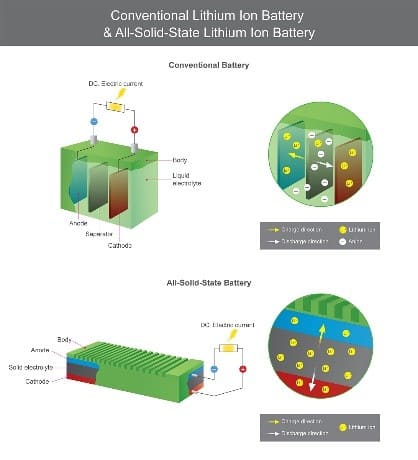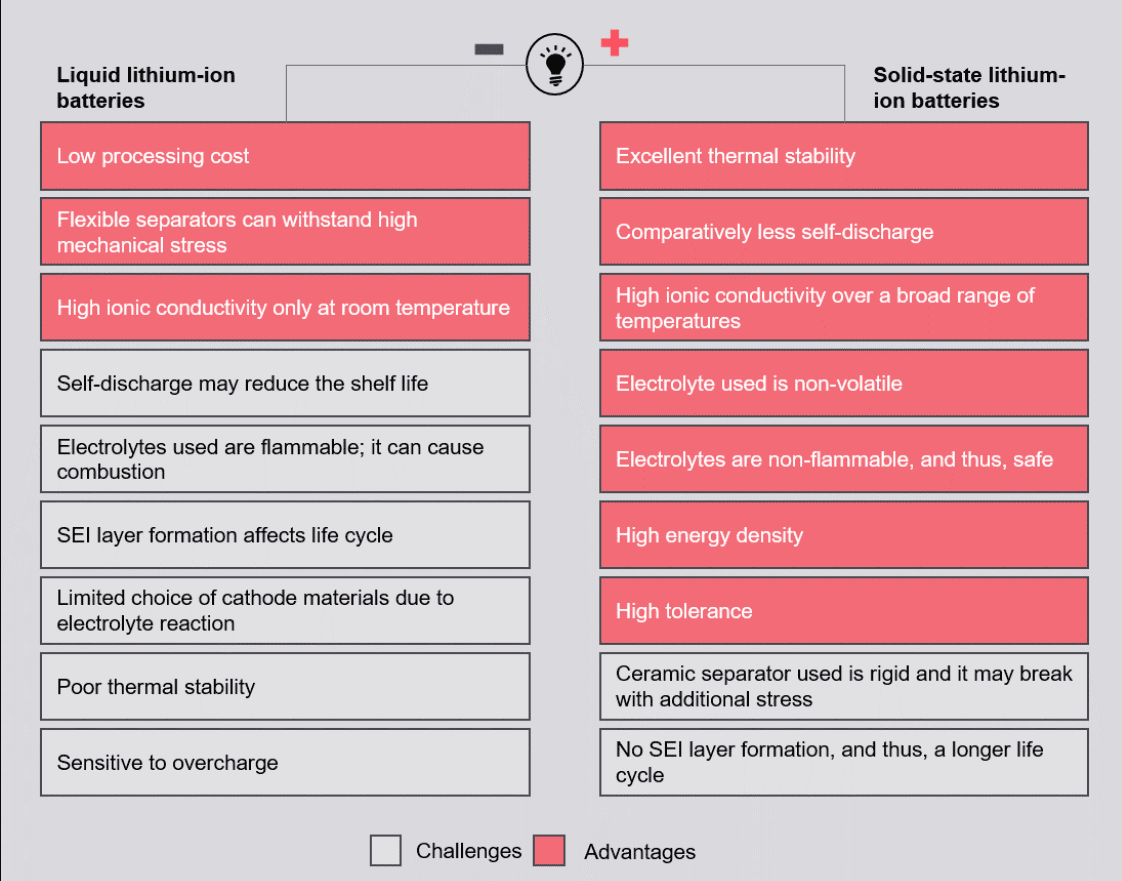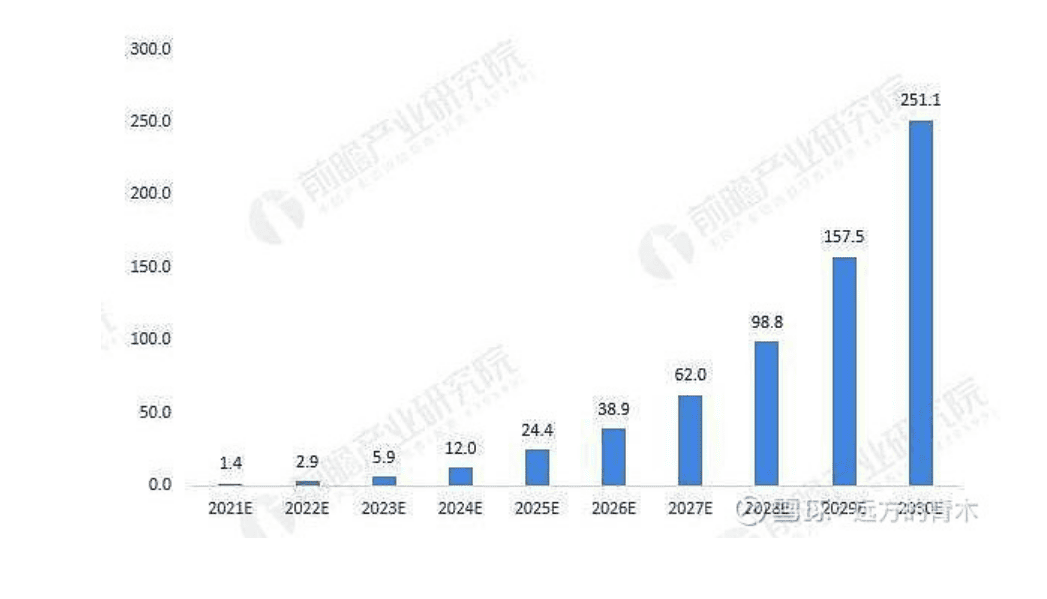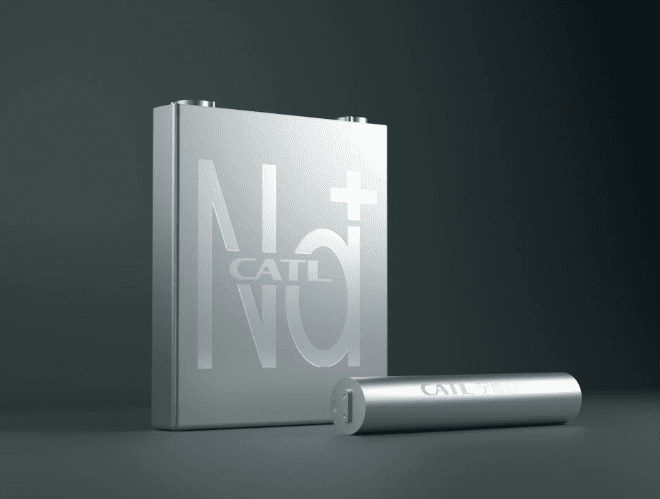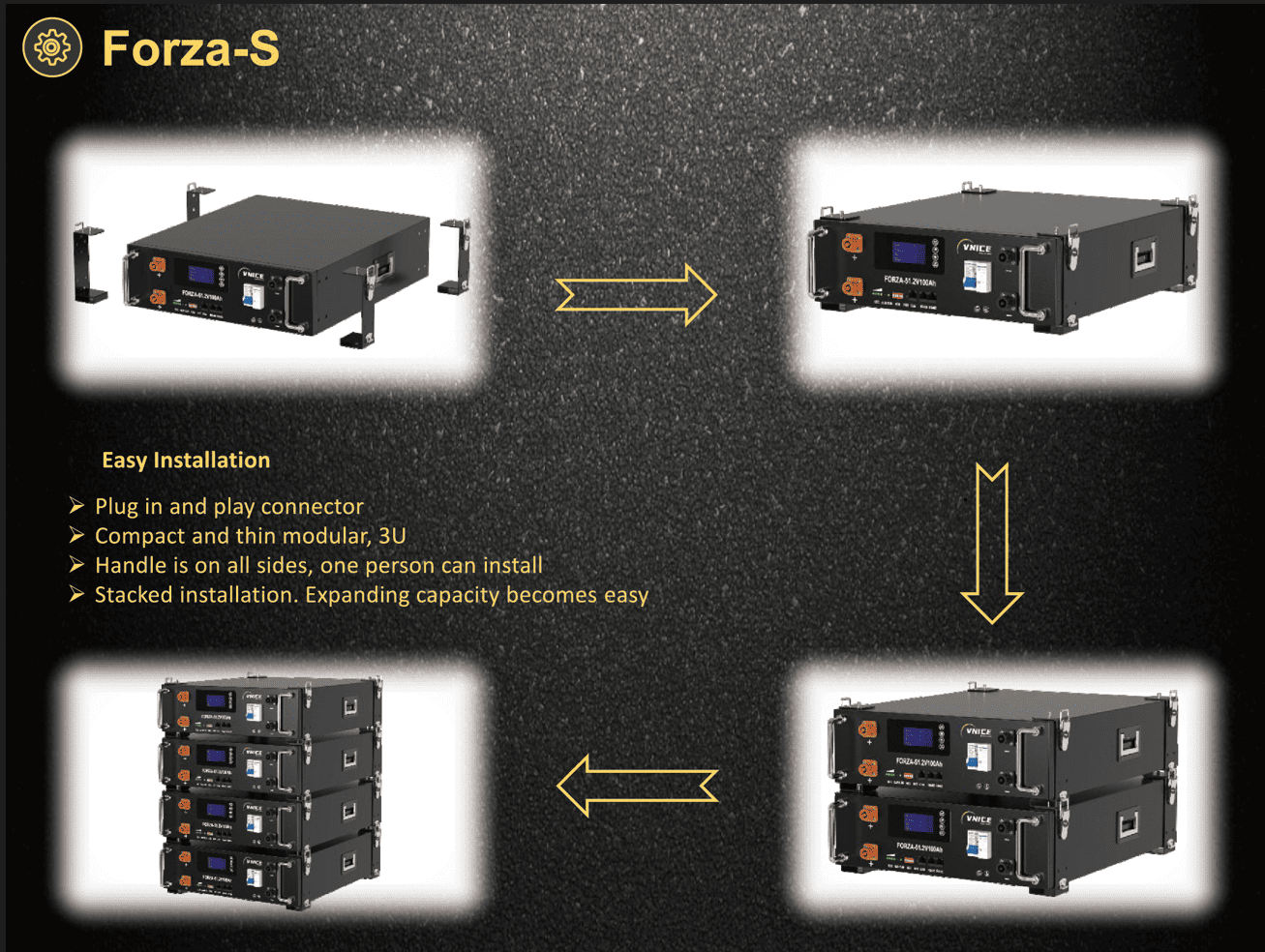Vnice Power
Industry News
Which one is the future development trend? Solid state battery or sodium ion battery?
19/4/2024
Overview of solid­state batteries
In solid­state ionics, a solid­state battery is a battery that uses solid electrodes and a solid electrolyte. A solid electrolyte layer could replace the flammable liquid solutions in current lithium­ion batteries, enabling more dense energy storage.
According to calculations by South Korean market research institutions, China's solid­state battery market is expected to reach 3 billion yuan in 2025 and 20 billion yuan in 2030.
Advantages of solid­state batteries
(1) High energy density
After the use of all­solid electrolyte, the applicable material system of lithium­ion batteries will also change. The core is that it is not necessary to use lithium­intercalated graphite anodes, but directly use metal lithium as the anode, which can significantly reduce the amount of anode materials. The energy density of the whole battery is significantly improved.
(2) Small size
If the diaphragm and electrolyte are replaced with solid electrolytes, the distance between the positive and negative electrodes can be shortened to only a few to a dozen microns, so that the thickness of the battery can be greatly reduced—so all­solid­state battery technology is the key to miniaturization of batteries. , The only way to thin film.
(3) The prospect of flexibility
The flexibility of all­solid­state batteries will also be significantly improved after being light and thin. By using appropriate packaging materials, the fabricated batteries can withstand hundreds to thousands of times of bending without attenuating performance.
(4) More secure
The following dangers may occur in traditional lithium batteries: Lithium dendrites may appear when working under high current, which will pierce the diaphragm and cause short­circuit damage; the electrolyte is an organic liquid, and side reactions, oxidative decomposition, gas generation, and combustion occur at high temperatures tendency will be exacerbated. Using all­solid­state battery technology, the above two problems can be directly solved.
Development status of solid­state batteries
Leading companies in the battery industry such as Toyota, Panasonic, Samsung, Mitsubishi, and the domestic CATL have all actively deployed solid­state battery reserve research and development.
At present, global car companies are making efforts in the field of solid­state batteries. Among them, BMW and Ford have also invested in Solid Power, Volkswagen has cooperated with solid­state battery companies very early, and GM has cooperated with Solid Energy Systems. In my country, according to NIO, the NIO ET7 equipped with solid­state batteries will be launched in the fourth quarter of 2022. NIO ET7 is expected to become the world's first solid­state battery­equipped car.
At present, the energy density that can be achieved by liquid lithium batteries is close to the limit, and the energy density of all­solid­state lithium batteries has the potential to break through 500Wh/kg. Therefore, solid­state batteries are the future development direction of lithium batteries, and they are also the must­haves for various companies.
Global lithium battery giants lay out solid­state batteries
The global lithium battery giants have also been laying out in the field of solid­state batteries as early as possible, but the mass production time is generally later than that of solid­state battery companies. Among them, LG New Energy is expected to achieve mass production in 2026, becoming the earliest mass production company among lithium battery giants.
Governments support the development of solid­state batteries
As the development direction of lithium batteries in the future, solid­state batteries are also supported by the policy plans of various countries. Among them, the United States, Japan and Germany have relatively complete development plans. Among them, Japan and Germany aim at the development of all­solid­state batteries, and also seek the development of other new concept batteries, while the United States is committed to cost reduction and the application of new cathode materials.
South Korea's Samsung has made relatively large­scale investment, equity participation or technical tracking of solid­state battery technology­related projects or companies around the world. LG New Energy plans to increase its annual battery production from 120GWh in 2020 to 156GWh by the end of 2021, an increase of 30%. It is planned to commercialize all­solid­state batteries between 2025 and 2027.
In December 2019, my country released the "New Energy Vehicle Industry Development Plan (2021­2035)", which raised solid­state batteries to the national level for the first time, and proposed that by 2030, my country's liquid electrolytes will evolve into solid­state electrolytes. At present, global companies have begun to increase their research layout in solid­state lithium batteries. It is expected that the global solid­state battery shipments will grow rapidly from 2021 to 2030, and may exceed 250GWh by 2030.
Na­ion battery and its development prospect
Overview of sodium ion batteries
Sodium­ion batteries mainly rely on the movement of sodium ions between the positive and negative electrodes to work, similar to the working principle of lithium batteries. The electrode materials used in sodium­ion batteries are mainly sodium salts, which are more abundant and cheaper than lithium salts. Since sodium ions are larger than lithium ions, sodium­ion batteries are a cost­effective alternative when weight and energy density are not critical.
Technical advantages of sodium ion batteries
Compared with lithium batteries, sodium­ion batteries have significant advantages:
(1) The sodium salt raw material reserves are abundant and the price is low. Compared with lithium battery ternary cathode materials, the cost of raw materials is reduced by half by using iron­manganese­nickel­based cathode materials;
(2) due to The characteristics of sodium salt allow the use of low­concentration electrolyte (the same concentration of electrolyte, the conductivity of sodium salt is about 20% higher than that of lithium electrolyte) to reduce costs;
(3) sodium ions do not form alloys with aluminum, and the negative electrode can use aluminum foil as a current collector , can further reduce the cost by about 8%, and reduce the weight by about 10%;
(4) Since the sodium­ion battery has no over­discharge characteristics, the sodium­ion battery is allowed to discharge to zero volts. The energy density of sodium­ion batteries is comparable to that of lithium iron phosphate batteries, but its cost advantage is obvious, and it is expected to replace traditional lead­acid batteries in large­scale energy storage.
Disadvantages of sodium ion batteries
At the moment when the energy density of batteries has become more concerned by capital, the biggest flaw of sodium­ion batteries­low energy density (at least 20% lower), currently makes it unable to compete with lithium batteries.
(1) Battery aluminum foil
Due to the nature of sodium ions, the current collectors of its batteries can use lower
The cost of aluminum foil is not like the copper foil + aluminum foil of lithium battery. At present, my country has a complete aluminum foil industry chain. Last year, the annual output of aluminum foil exceeded 4 million tons, and it was also exported in large quantities (about 1.3 million tons).
(2) Soda ash
Sodium­ion batteries are inseparable from sodium, and the most likely raw material to look upstream is sodium carbonate, which is soda ash. The consumption of soda ash is mainly in the glass field, and the penetration of sodium­ion batteries has made traditional soda ash find an increase.
Sodium ion battery application
On July 29, 2021, CATL released the first generation of sodium­ion battery products. Its first­generation sodium­ion battery cells have a single energy density of 160Wh/kg, which is still far behind the current lithium iron phosphate batteries and ternary lithium batteries commonly used in pure electric vehicles.
On December 23, 2021, Three Gorges Energy, Three Gorges Capital, the People's Government of Fuyang City, Anhui Province, and Beijing Zhongke Haina Technology Co., Ltd. settled in Fuyang, Anhui for the world's first large­scale mass production line of sodium­ion batteries. The world's first 1GWh large­scale mass production line of sodium­ion batteries will be officially put into production in 2022.
On April 3, 2022, Huawei became a shareholder of Zhongke Haina. The company is the first high­tech enterprise in China to focus on the development and production of a new generation of energy storage system­sodium­ion batteries. The energy density of its sodium­ion batteries has reached 145 Wh /kg, which is about 3 times that of lead­acid batteries. The cycle life is more than 4,000 times, excellent high and low temperature performance, high safety, and fast charging capability.
The "supplementary effect" of sodium­ion batteries is greater than the "substitution effect"
It is generally believed in the industry that sodium­ion batteries and lithium batteries are "supplementary" rather than "substitute" relationships. Due to the low energy density of sodium­ion batteries, they are more suitable for applications in medium and low­speed electric vehicles and large­scale energy storage.
Previously, the Ministry of Industry and Information Technology made it clear that new batteries such as lithium batteries and sodium­ion batteries are "ballast stones to promote the development of the new energy industry". It is expected to become an important supplement to lithium batteries, especially in the field of stationary energy storage with good development prospects.
At this stage, sodium­ion battery products will be mainly used in application scenarios below 150 Wh/kg, which can alleviate the limited development of energy storage batteries caused by the shortage of lithium resources to a certain extent. There is no obvious bottleneck in the large­scale mass production of sodium­ion batteries, and they will quickly seize the market with their own characteristics in specific markets.
Summarize:
Sodium­ion batteries have not yet established a mature upstream and downstream industrial chain system like lithium­ion batteries. It is still in the early stages of development, and has not taken advantage of its most important low­cost advantage, low energy density, and can only be used in limited application scenarios. It is currently regarded as an important supplement to lithium batteries.
The solid­state batteries in lithium­ion batteries have established a mature upstream and downstream industrial chain system, and the current energy density has reached 368Wh/Kg. With the fully automated mass production, the cost of solid­state batteries has also dropped significantly, and the use scenarios of solid­state batteries very broad.
The products of Vnice are mainly used in household energy storage systems around the world. Solid­state batteries have high energy density, small size, safety, and better flexibility. They are perfectly suitable for the entire home energy storage battery of Vnice Power. series of products. At present, Vnice Power has reached a strategic cooperation with China's leading solid­state battery manufacturer. Take the lead in introducing solid­state batteries into the household energy storage industry and become a leading supplier of solid­state battery packs.
WE OFFER BEST IN CLASS SERVICE FOR YOUR NEEDS
86-13631354535

